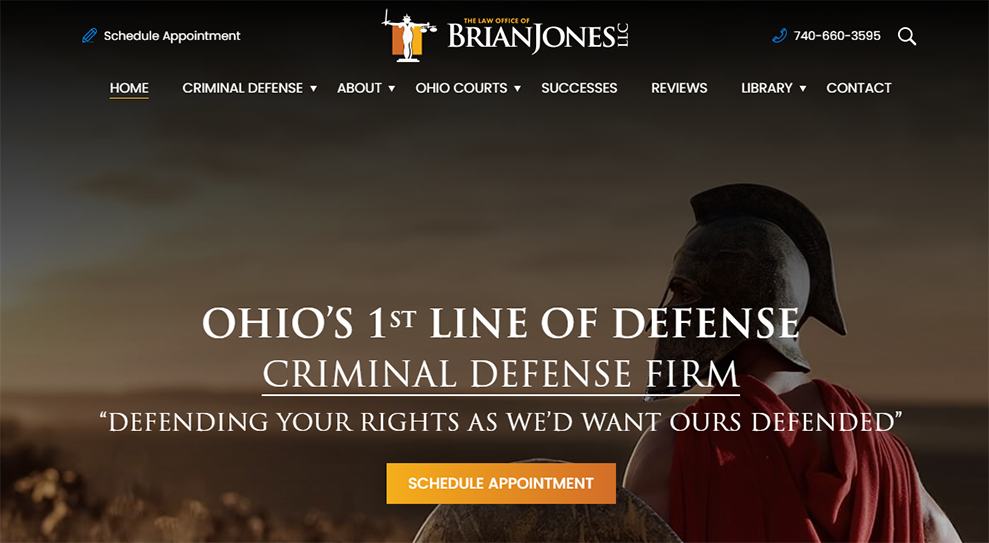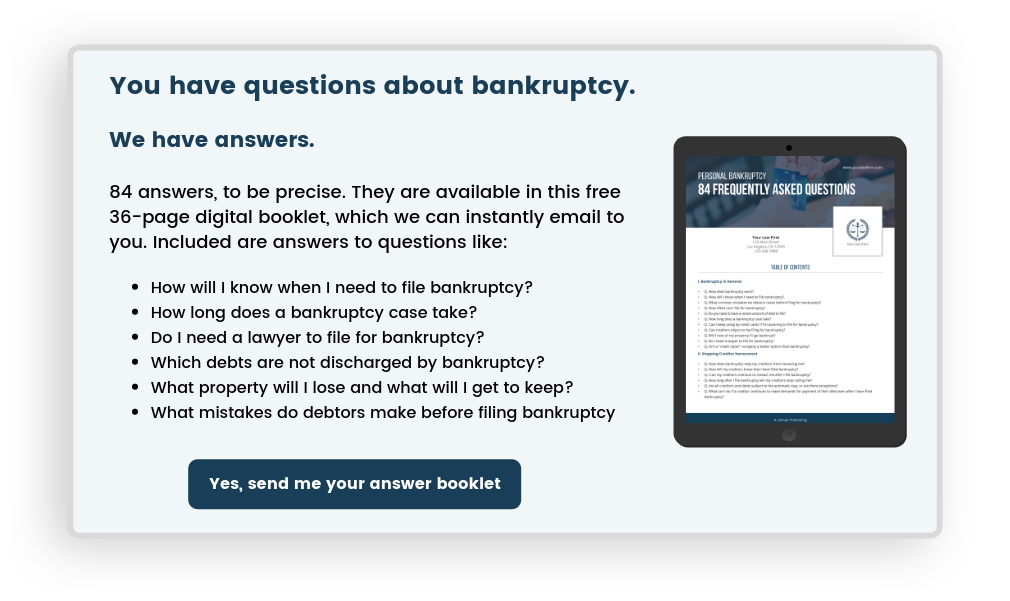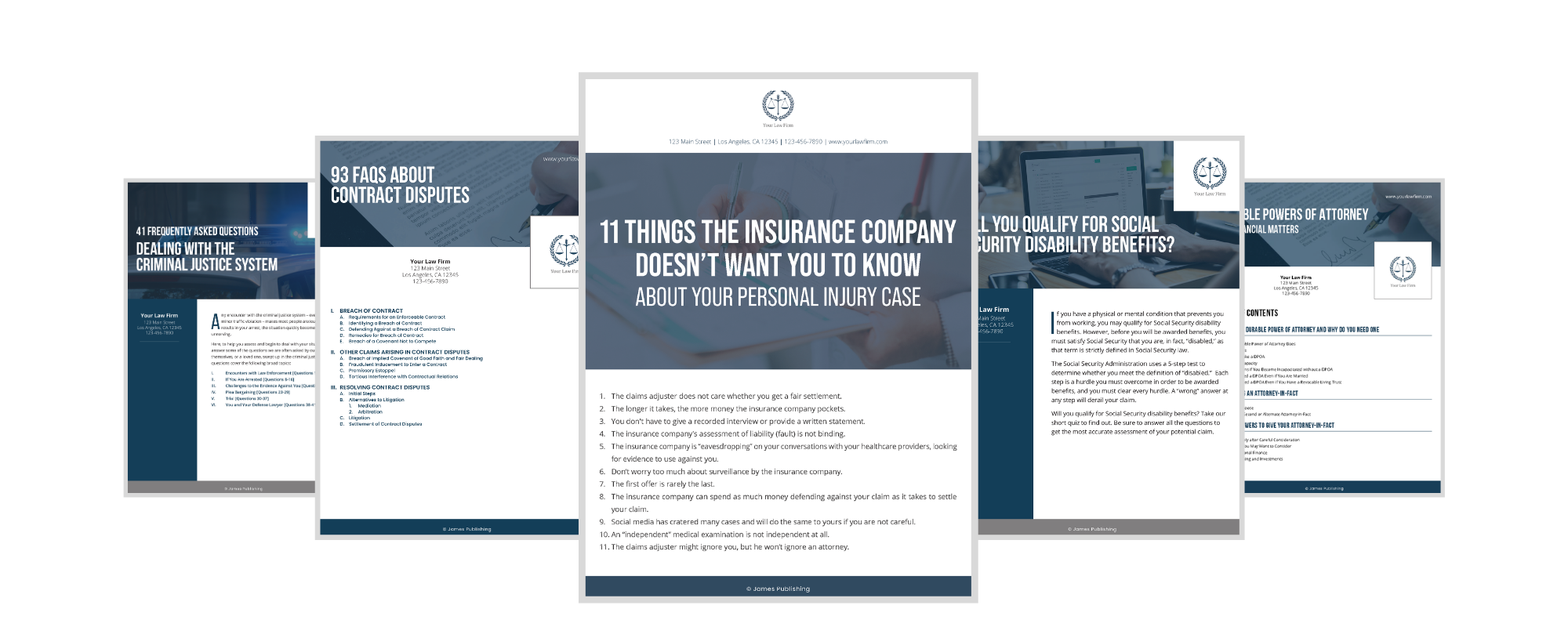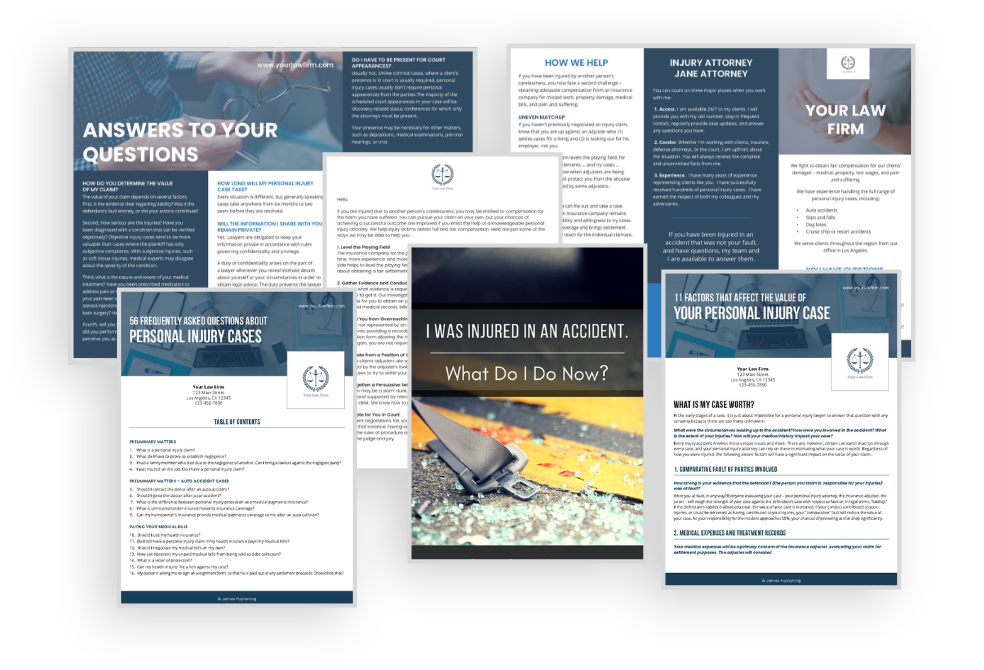
11 DIY Tips That Will Improve Your Marketing Results

7 DIY Tips That Will Improve Your Law Firm’s Marketing Results
Suggestions from Nick Jervis, Samson Consulting
The fastest and least expensive way to increase your firm’s revenue is to generate more clients from the people who are already finding you. These 7 tips will help you do exactly that.
GENERATING CALLS
1. Every web page should end with two calls-to-action. Because of 3/4s or more of the time your website is viewed on a smartphone rather than a desktop or laptop, each page on your website should prominently display a: (a) click-to-call phone number and (b) link to your inquiry form.
A floating bottom bar can work well to display these two items, or the text on each web page can end with, “To learn more about how we can help you, call 000-000-0000 or submit this form.”
If your website lacks these two items, fixing the shortcoming will have a material impact on your call volume. Tell the agency handling your website that this is a high-priority project.
2. Put your clients first in every piece of marketing writing, and be different. What benefit do your clients receive by retaining you? How does working with your firm differ from retaining your competition?
Closely examine your marketing message … especially the top copy on your website. Does it sound similar to your competition’s? Without a distinct and compelling sales message, your marketing will perform poorly.
TURNING CALLERS INTO CLIENTS
The easiest way to boost your firm’s profits is to improve your conversion percentage. So many firms fall short in how they handle prospect inquiries that this subject should be your top focus.
3. Follow-up, follow-up, follow-up. Law firms as a group are terrible at lead management. They don’t make handling prospect inquiries a priority, they are slow to return prospect calls, those calls frequently lack empathy, and rarely is there any follow-up with prospects who don’t immediately sign.
Lead handling is sales. Like any other endeavor sales requires training to be good at it, which few lawyers have received or have any interest in obtaining. The solution? Put a person with sales talent and experience in charge of handling your prospect inquiries. Establish an aggressive lead follow-up process that includes repeated attempts to connect by phone or email, a shock-and-awe package and nurturing series for the undecided, and a monthly newsletter. You will see a meaningful bump in your conversion rate, revenue, and profitability.
If you cannot afford a salesperson or your lead volume does not justify the expense, listen to a sampling of your inquiry calls or make a few ghost calls. At minimum, you need to learn whether your front desk person is costing you business.
4. Focus on the prospects and their legal problems. Too many inquiry calls are handled with the law firm’s interest in mind rather than the prospects’.
You have to find out what matters to the prospective client in order to stand apart from the other firms being considered. That requires asking detailed questions about the prospect’s situation, and identifying the aspects of the legal issue that most concern the prospect. Challenges that concern you as a lawyer are likely not what worry the prospect. Try asking:
— How is the situation affecting you?
— What are the biggest challenges that ____ is creating?
— Are you concerned that ______?
5. Begin with a fixed price service. Hourly billing makes prospects nervous. If that is how you bill, at the initial consultation experiment with quoting an affordable fixed price for your initial steps. That gives the prospect a chance to try out working with you at a known cost.
Once the new client is then comfortable with the value and service you are delivering, migrate the client to hourly charges. It will be much easier for a new client to say yes to an unknown cost once the client trusts you.
6. Set weekly and monthly file opening goals. Whether you are the only fee earner, or you have several billers on your team, setting and monitoring targets for signing new clients will place attention on this critically important task.
What gets measured gets improved. Calls from prospective new clients will move up in priority, and will not be left to linger for hours or even days.
7. Publicly assess new-business numbers. For all your attorneys and other fee generators, you should lead a weekly or biweekly 15-minute meeting that has them report:
— Inquiries from prospects received last week
— Number converted to clients
— Reason why some did not convert
— Chargeable hours for the week
— Billings for the week
Interested in improving the results generated from your current marketing efforts?
Schedule a call with President Kara Prior.

Takeaways from How Lawyers Can Boost Their Marketing ROI
With Bill Hauser of SMB Team
Lawyers tend to say the same things as their competitors, and prospects cannot distinguish one attorney from another.
Having a unique selling proposition is critical, according to Bill at SMB Team. Embrace your insecurities and make them your USP. If your firm is new and small, talk about how that allows you to devote extra time to each client and case, and how important each client and case is to you.
The key marketing amplifier is brand. Brand creates trust. Without building a brand and creating that trust, cold marketing will not work well.
ROI obsession holds lawyers back. Instead they need to focus on educating and helping prospects so they build name recognition and trust. Without that, your leads will be skeptical and hard to convert.
The more important metric to measure instead of marketing ROI is, “Are you reaching your revenue goals?”
Second is cost per lead, but do so on a macro basis, not by channel. We live in a multi-touch society, and the last touch before call is not always the most important one.
The third marketing measurement to make is booked consult conversion rate.
Building pre-eminence is the highest return marketing task. Execute by giving away so much free information and assistance that the market trusts you.
Marketing only captures leads, which are opportunities to profit. But it takes effective intake and efficient processes to turn those leads into profit.
Form relationships you feel unworthy of creating. Don’t self-limit when networking.
Before you blame your agency for not performing, first look at your law firm. Is your intake as strong as it should be? Am I persistently, positively following up with and educating my leads? Do I have a high-energy, service-oriented person answering the phones? Do you have a strong selling proposition? Do you have a proprietary marketing strategy that your agency executes?

Book Summary: The New Law Business Model Revealed
by Ali Katz
This well-written title from Ali at New Law Business Model is aimed at lawyers who want to shift their practices to a fixed-fee model, and do so by selling estate planning services. But in doing so, it also details an approach that can be used by lawyers in other specialties, including bankruptcy, business transactions, divorce, immigration, and personal injury.
Below we summarize tips from the book that can be used to advantage whatever your specialty. However, for estate planners … both current and future … much value will be obtained from the book and we recommend buying a copy ($37 paperback / $19 Kindle on Amazon).
WHERE TO FOCUS
1. Five key metrics. You should weekly track for your firm: (a) its number of inquiries, (b) how many of those inquiries turned into booked appointments, (c) how many of the booked appointments were kept, (d) how many kept appointments turned into paying clients, and (e) at what average fee. The author’s free site MoneyMapforLawyers.com can help you determine how many you need at each level.
2. Structured initial consultation. Author Katz through her agency teaches lawyers to provide structured initial planning sessions that require prospects to complete homework beforehand or pay $750 to do the homework during the session. The technique is usable by bankruptcy, divorce, immigration, and personal injury lawyers. Unlike most initial consultations, the emphasis is on planning, not selling.
3. Targeted marketing. Creating targeted services for niches, in the author’s case — families with young children, business owners, and retirees — brings focus and differentiation to your marketing, and allows you to become the go-to lawyer in your community for those highly-targeted services.
4. Quality referrals. Initially the author wasted much time trying to build a sizable network of referral sources. She learned over time that it is far more productive to focus on cultivating and educating 3-4 referral sources. For referral sources, quality counts more than quantity.
Most important for the author was educating the sources on how she and her services differed from other estate planners. [Again, here is that differentiation thing. Getting the message?]
5. Affinity groups. Speaking to groups having the right prospects is the author’s number one source of new business. Best of all, this type of marketing is free. Key to its success is an automated follow-up program. The author obtains a 15% open rate for her follow-up emails, and frequently hears, “Ali, it is great to meet you at last. I’ve been getting your emails for so long I feel as if I know you.”
The lawyers the author advises are hosting 2-6 presentations/month, and any paid advertising they do is aimed at getting prospects to attend the presentations. She strongly recommends no paid advertising until your client conversion rate hits 80%.
6. Higher signup percentage. The author has helped bankruptcy and divorce lawyers materially improve their conversion percentages by giving their initial consultations a name, a purpose, and a value. Prospects receive the planning session free only if they do their homework, and that commitment is backed with a credit card.
Want to convert more of your leads into paying clients?
Schedule a call with President Kara Prior to learn how we can help.

Marketing Tip of the Month
from Andy Stickel, Social Firestarter
“Here are 4 of the biggest mistakes lawyers make with their marketing (according to Andy at Social Firestarter):
1. Not treating leads as urgent. Clients calling want help now. If they are not treated like a priority, they will go elsewhere.
2. Failing to train your phone person to capture leads. The person answering your phone must obtain a caller’s name and phone number, and promise a quick return call from the attorney.
3. Using a call menu or phone tree. Every extra step is one more chance for the prospect to hang up. Get rid of them.
4. Not using an answering service after hours. You must have 24-hour call service. One extra case/month will pay for the service. Noting on your Google My Business listing that you are open 24/7 will increase your call volume.”











